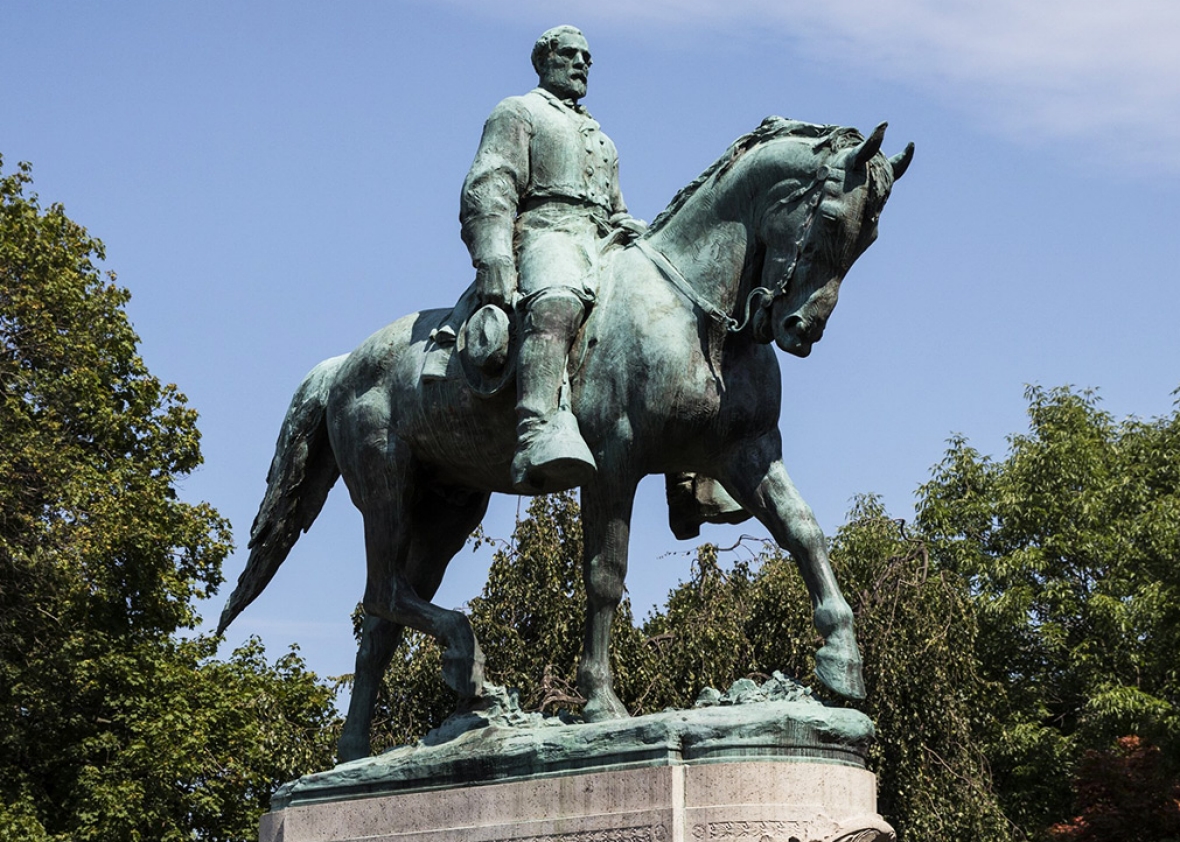
This summer showed how much the Civil War still echoes into our time. After Charlottesville, there were renewed calls to remove monuments to prominent confederate generals. That never appeared to command majority support. The question I don’t think ever got resolved was what the monuments’ purpose was. The answer should heavily inform whether removal is the best course.
One reason to keep the statues is as an acknowledgement of how important the Civil War was in our history. It was our bloodiest war, and one that led to profound shifts in our constitutional system—the 13th, 14th, and 15th amendments, to name only a few. Seeing the statues reminds us that a terrible war was needed to produce this progress. But if this is truly the reason to support keeping the monuments, we’re left with crucial questions. First, is the story these statues are telling a complete acknowledgment of our history? In many public places, we see only confederate generals with statues. That ignores that even in the South, many fought for the Union. As you might suspect, that includes many black men who ran from their masters to fight for freedom for themselves and their loved ones. As you might not suspect, it also includes many white men from the South who fought for the Union. If we’re serious about acknowledging our history in public places, wouldn’t we also need to include these stories?
Moreover, was acknowledging our history really the reason the statues were built in the first place? For example, many of the statues were built in the early 1900s and 1960s. Was there a renewed interest in General Lee’s tactics at Cold Harbor or General Jackson’s campaign in the Shenandoah at these times? Or is the best explanation the implementation of Jim Crow laws and massive resistance to desegregation taking place during these times?
A second and related reason not to remove the statues is to acknowledge the very racism that led to their construction in at least some cases. A person could say, yes, many of the statues were built to celebrate white supremacy and as a signal of defiance to the burgeoning civil rights movement in the 1960s. And perhaps that is precisely their value. They remind us that the movement’s gains faced fierce opposition and that our society once openly celebrated men who owned slaves and fought a federal government which they then saw as uprooting the racial hierarchy they knew.
Third, you could support keeping the statues because you think the men should be celebrated. Maybe you think the generals memorialized were wrong to support slavery or secede from the Union, but that they were skillful soldiers and honorable men on the whole. Or maybe you think the statues stand in for many of the confederate foot soldiers who did not own slaves and thought they were fighting to defend their homes. Whatever their flaws, they are people we should look up to and the statues are reminders of that. That line of thinking raises another question. Suppose a group of black men had taken up arms against the federal government and attempted to overthrow it because they found it oppressive. Suppose too that they had killed thousands of people and held racist attitudes toward whites. Would such men be given statues? Would we care that they demonstrated bravery while fighting, or would we unequivocally condemn them?
Fourth, you could support the statues as an effort at national reconciliation. As Shelby Foote noted in the Civil War diaries, losing the Civil War gave (white) Southerners a sense of defeat that Americans from other parts of the country had never experienced. For the sake of unity, we needed to welcome them back with open arms. One way to do that was to honor the soldiers and Generals who fought for the South and celebrate their tenacity and bravery. One question is whether the absence of such monuments in 2017 would cause white southerners to feel the same sense of alienation from the rest of their countrymen that they did after Appomattox.